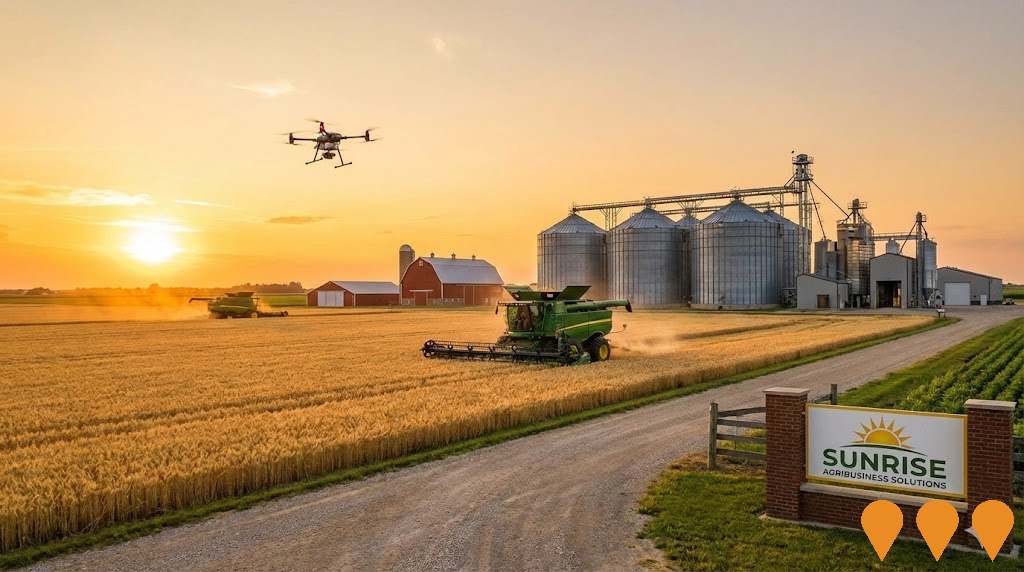Chart Color Schemes
est. as @ -- *
ABS ERP | -- people | --
2021 Census | -- people
Sales Activity
Curious about local property values? Filter the chart to assess the volume and appreciation (including resales) trends and regional comparisons, or scroll to the map below view this information at an individual property level.
Find a Recent Sale
Sales Detail
Population
Northern Highlands has shown very soft population growth performance across periods assessed by AreaSearch
Northern Highlands' population, as of Aug 2025, is approximately 3,200. This figure reflects a growth of 105 people since the 2021 Census, which recorded a population of 3,095. The change is inferred from ABS estimates: 3,198 in June 2024 and an additional 157 validated new addresses since the Census date. This results in a population density ratio of 0.00 persons per square kilometer. Northern Highlands' growth rate of 3.4% since the 2021 census exceeded the SA3 area's growth rate of 2.5%. Natural growth contributed approximately 77.8% to overall population gains recently.
AreaSearch uses ABS/Geoscience Australia projections for each SA2 area, released in 2024 with a base year of 2022. For areas not covered by this data and years post-2032, Queensland State Government's SA2 area projections are adopted, released in 2023 based on 2021 data. These state projections do not provide age category splits; hence proportional growth weightings from ABS Greater Capital Region projections (released in 2023, based on 2022 data) are applied for each age cohort. Future population trends indicate a decline of 472 persons by 2041. However, specific age cohorts are expected to grow, notably the 85 and over age group, projected to increase by 16 people.
Frequently Asked Questions - Population
Development
Residential development activity is lower than average in Northern Highlands according to AreaSearch's national comparison of local real estate markets
Northern Highlands has averaged approximately five new dwelling approvals per year over the past five financial years, totalling 25 homes. As of FY-26, zero approvals have been recorded to date. On average, 3.5 new residents have been associated with each home built annually between FY-21 and FY-25, indicating a significant demand exceeding supply, which typically drives price growth and increased buyer competition. The average construction value for new dwellings in the area is $456,000, lower than regional levels, suggesting more affordable housing options for buyers.
This financial year has seen $4.9 million worth of commercial approvals, highlighting Northern Highlands' primarily residential character. Compared to the Rest of Qld, Northern Highlands demonstrates moderately higher construction activity, with a 43.0% increase above the regional average per person over the five-year period. This sustained activity provides reasonable buyer options while maintaining existing property demand, although it remains below national averages, potentially due to planning constraints. Recent development has consisted solely of standalone homes, preserving Northern Highlands' traditional low-density character and appealing to families seeking space.
The estimated population density is 626 people per dwelling approval, reflecting the area's quiet, low-activity development environment. With stable or declining population forecasts, Northern Highlands may experience reduced housing pressure, creating favourable conditions for buyers.
Frequently Asked Questions - Development
Infrastructure
Northern Highlands has limited levels of nearby infrastructure activity, ranking in the 18thth percentile nationally
Changes in local infrastructure significantly affect an area's performance. AreaSearch has identified a total of 22 projects that could impact the region. Notable projects include the CopperString 2032 project, Mount Isa-Townsville Rail Corridor Upgrade, and Wongalee Wind Energy Project. The following list details those most likely to be relevant:.
Professional plan users can use the search below to filter and access additional projects.
INFRASTRUCTURE SEARCH
 Denotes AI-based impression for illustrative purposes only, not to be taken as definitive under any circumstances. Please follow links and conduct other investigations from the project's source for actual imagery. Developers and project owners wishing us to use original imagery please Contact Us and we will do so.
Denotes AI-based impression for illustrative purposes only, not to be taken as definitive under any circumstances. Please follow links and conduct other investigations from the project's source for actual imagery. Developers and project owners wishing us to use original imagery please Contact Us and we will do so.
Frequently Asked Questions - Infrastructure
Queensland Energy and Jobs Plan
State-wide renewable energy transformation program delivering large-scale wind, solar, pumped hydro, battery storage and transmission infrastructure. Aims for 70% renewable energy by 2032 and 80% by 2035, supporting 100,000 jobs by 2040 across regional Queensland. Largest clean energy investment program in Australia.
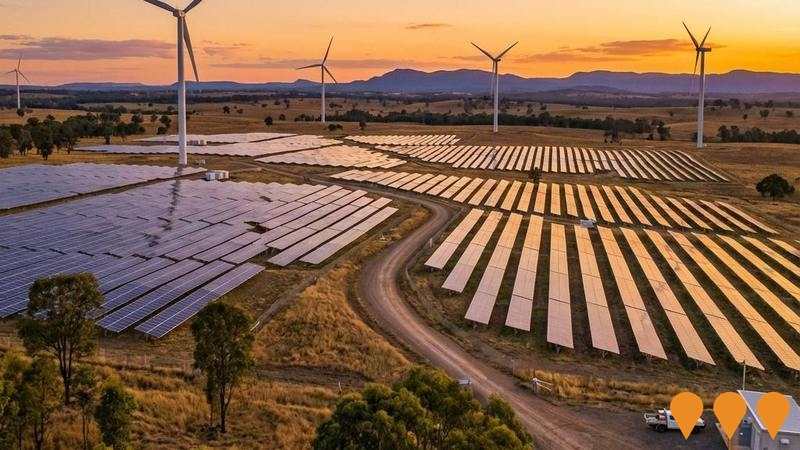
Queensland Energy and Jobs Plan - Northern Queensland SuperGrid (CopperString 2032 & Northern REZ)
Flagship component of the Queensland Energy and Jobs Plan delivering the 1,100 km CopperString 2032 high-voltage transmission project, establishment of the Northern Renewable Energy Zone, and supporting SuperGrid infrastructure to unlock large-scale renewable energy and critical minerals processing in North and North-West Queensland.

Queensland Energy and Jobs Plan
The Queensland Energy and Jobs Plan is a $62 billion+ statewide program to deliver publicly owned renewable energy generation, large-scale battery and pumped hydro storage, and the Queensland SuperGrid transmission backbone. Targets: 50% renewables by 2030, 70% by 2032, 80% by 2035. Multiple projects are now under construction including CopperString 2032, Pioneer-Burdekin Pumped Hydro, and numerous Renewable Energy Zones.
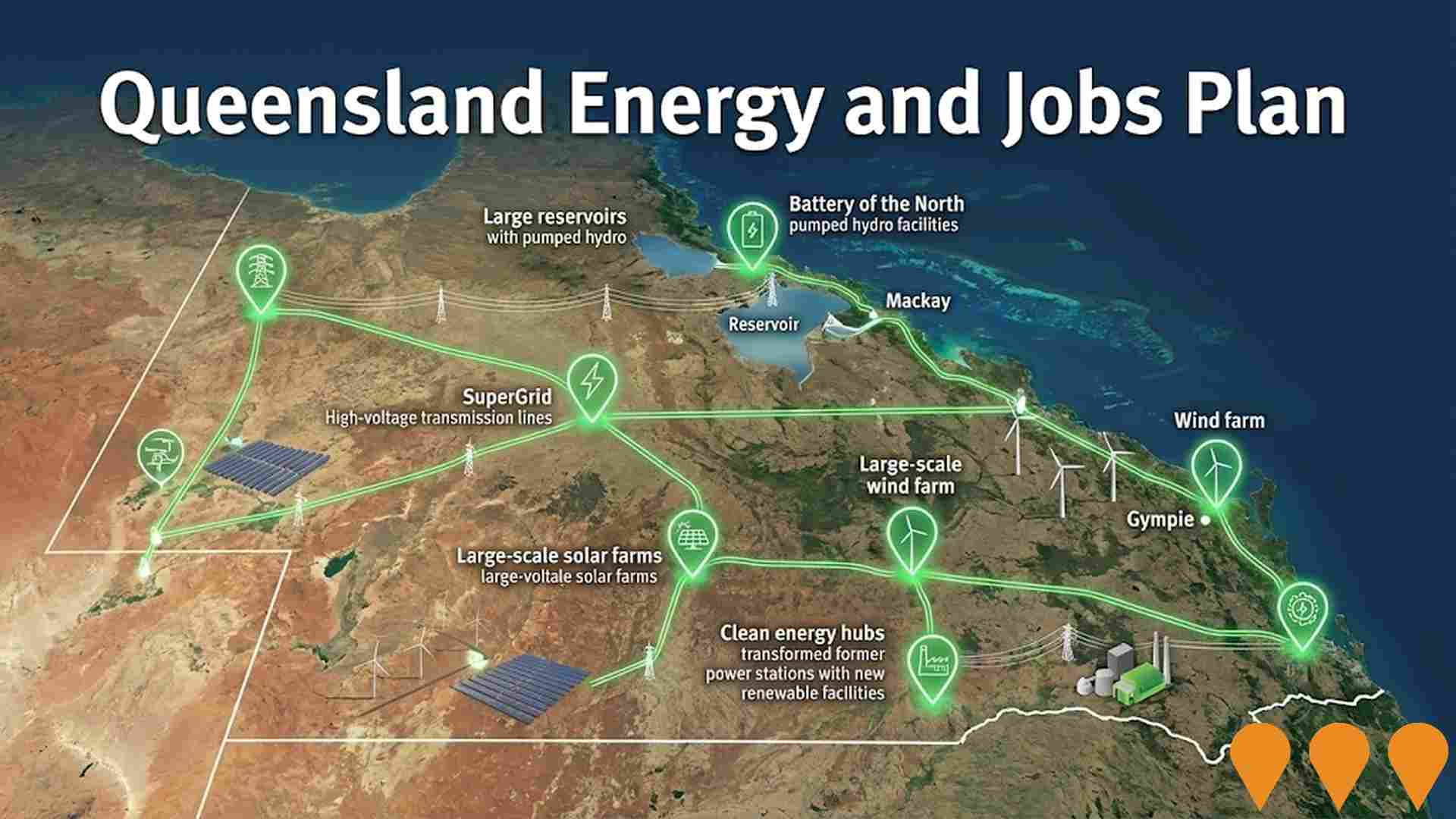
Queensland Energy and Jobs Plan SuperGrid
The Queensland Energy and Jobs Plan is delivering the Queensland SuperGrid and 22 GW of new renewable energy capacity through Renewable Energy Zones (REZs) across the state. Legislated targets are 50% renewables by 2030, 70% by 2032 and 80% by 2035. Key delivery mechanisms include the Energy (Renewable Transformation and Jobs) Act 2024, the SuperGrid Infrastructure Blueprint, the Queensland REZ Roadmap and the Priority Transmission Investments (PTI) framework. Multiple transmission projects are now in construction including CopperString 2032, Gladstone PTI (Central Queensland SuperGrid), Southern Queensland SuperGrid reinforcements, and numerous grid-scale batteries and pumped hydro projects under active development.
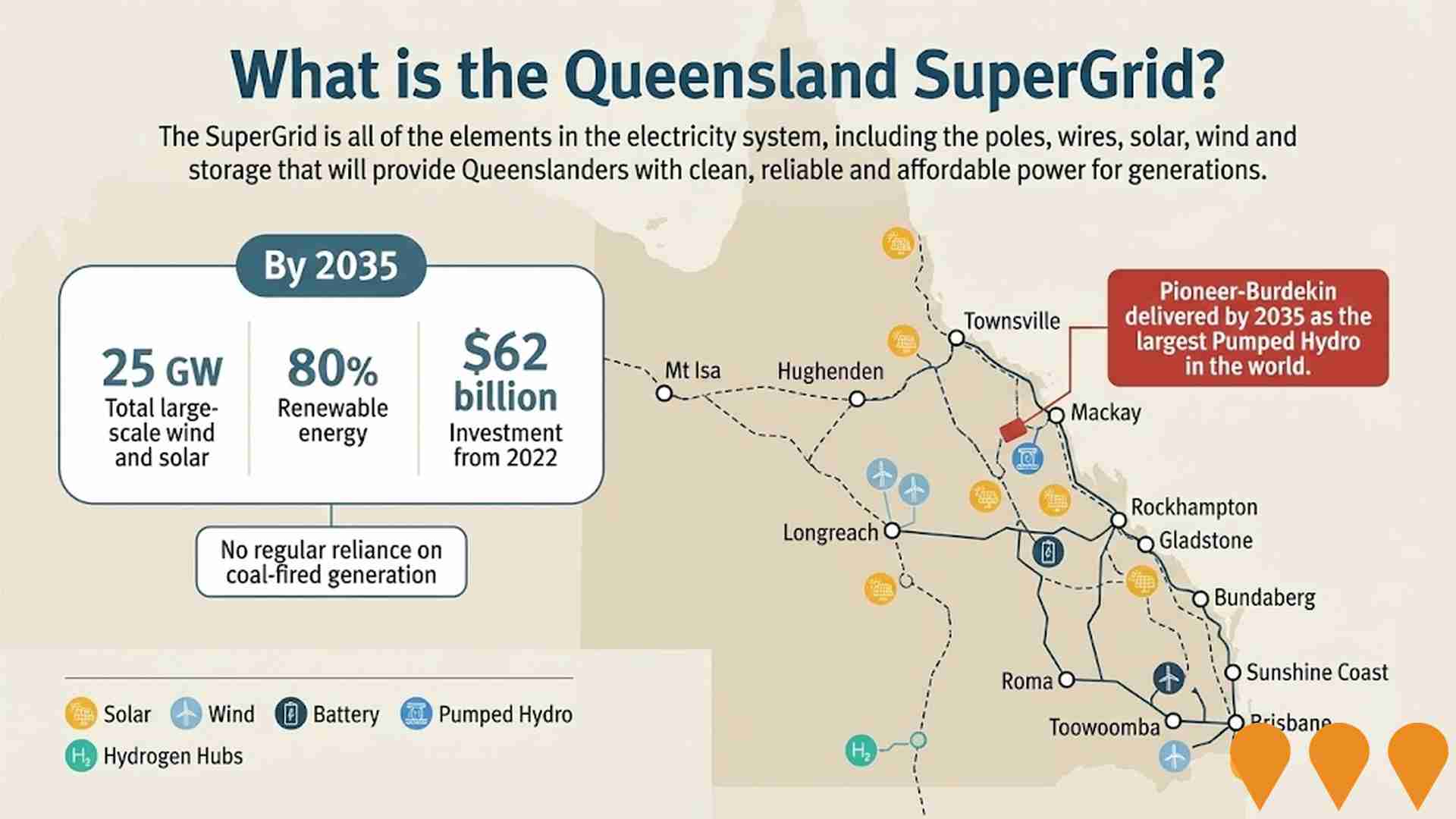
CopperString 2032
CopperString 2032 is a 1,100 km high-voltage transmission project (including spurs) connecting the North West Minerals Province to the National Electricity Market for the first time. The 500 kV line runs from just south of Townsville to Mount Isa, with construction underway since mid-2024. Fully funded with Queensland Government ownership, it will unlock large-scale renewable generation and critical minerals projects in north-west Queensland. Expected energisation by late 2029.

CopperString 2032
The CopperString 2032 project involves constructing approximately 840 km of high-voltage electricity transmission lines to connect Queensland's North West Minerals Province to the National Electricity Market. It includes a 500 kV line from Townsville to Hughenden, a 330 kV line from Hughenden to Cloncurry, a 220 kV line from Cloncurry to Mount Isa, along with substations and supporting facilities. The project is prioritizing the Eastern Link with private investment sought for the Western Link.
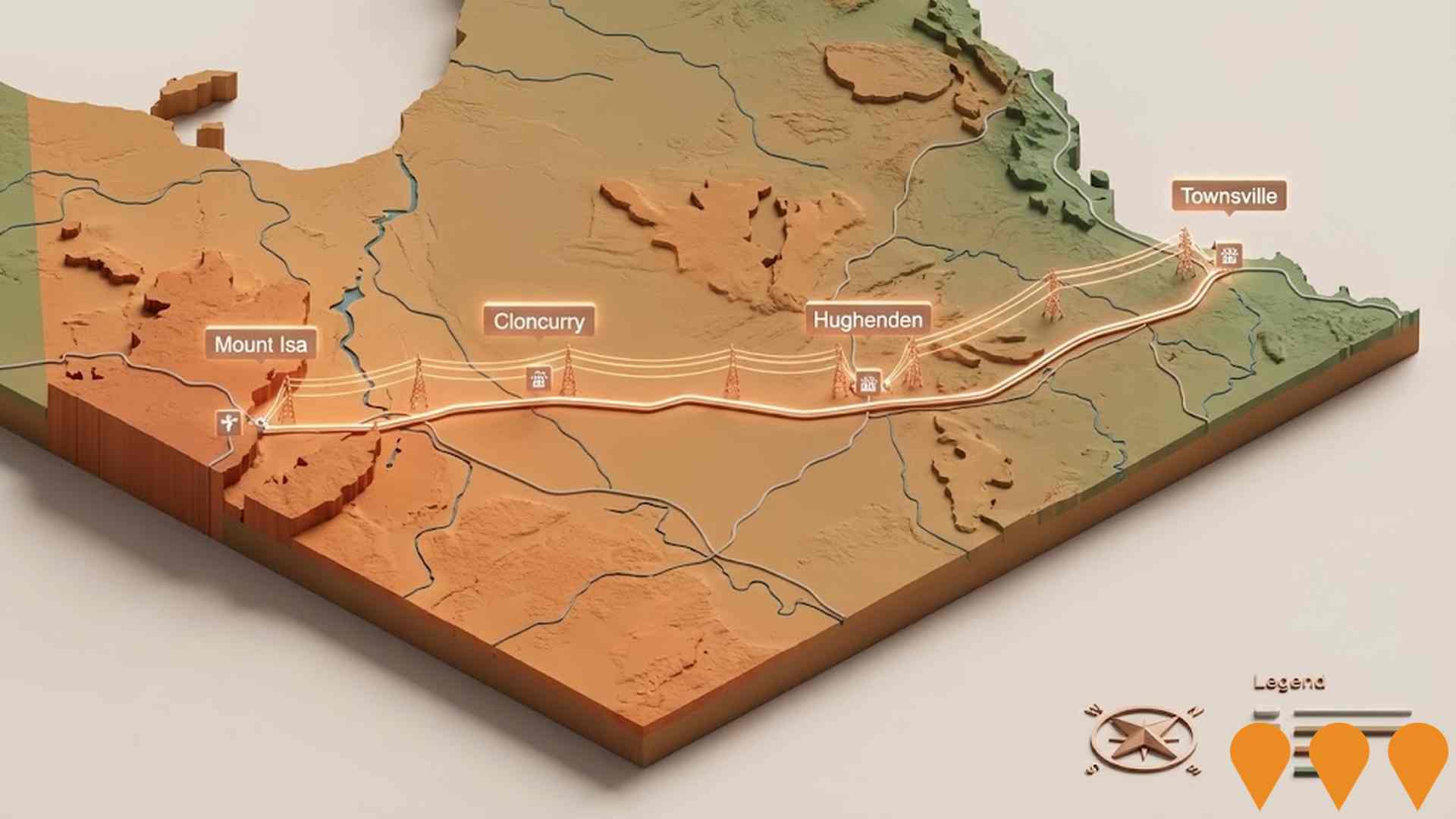
Wongalee Wind Energy Project
Windlab's Wongalee Wind Energy Project is part of the North Queensland Super Hub. The project is planned for up to 175 turbines with up to 1.4 GW capacity near Prairie in Flinders Shire. In May 2025 the project received State Development approval from the Queensland Government and is advancing detailed design and delivery planning, with Federal EPBC assessment still to follow.
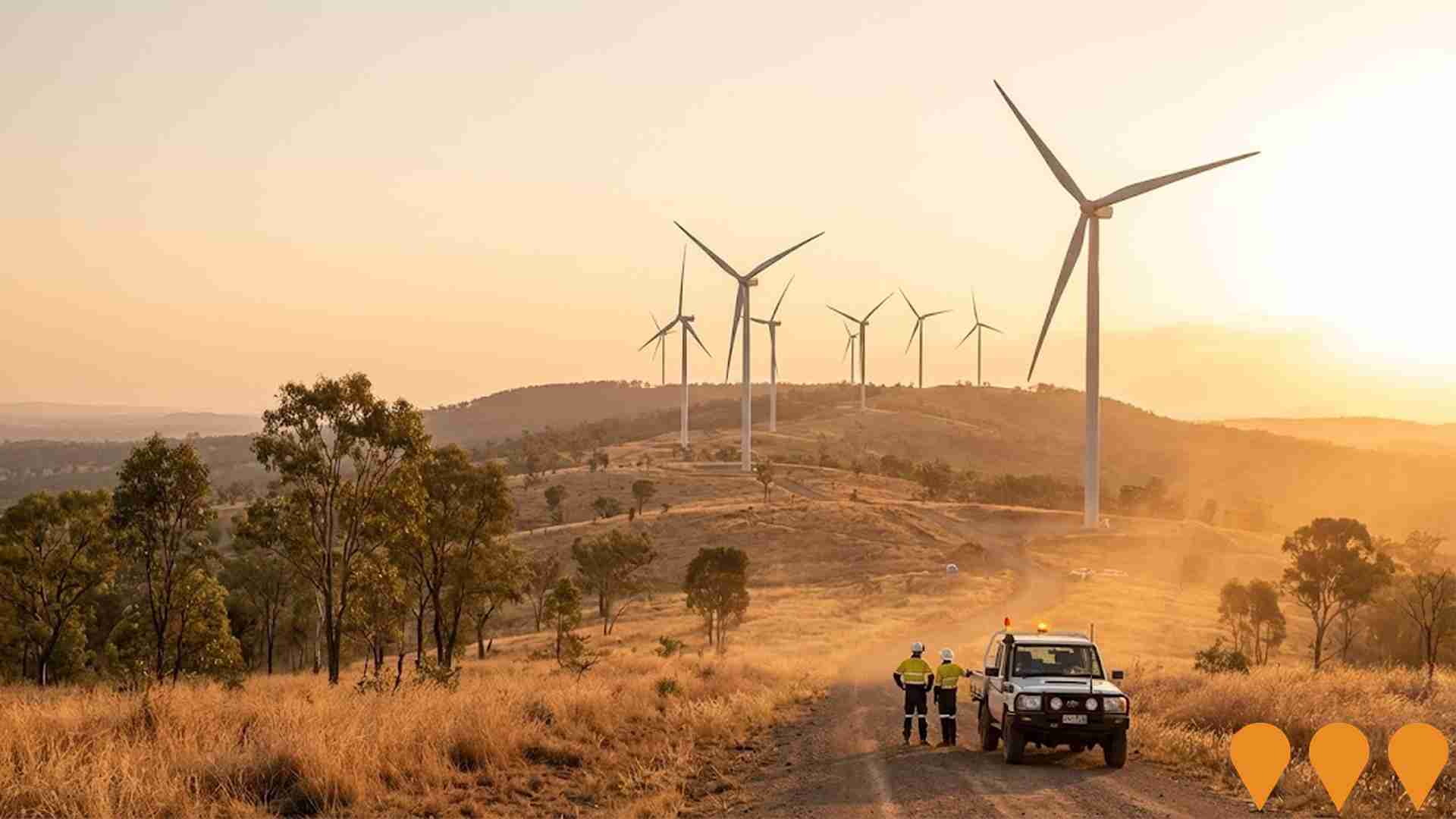
Residential Activation Fund - Central Queensland Allocation
Part of the $2 billion Residential Activation Fund with at least 50% allocated outside SEQ. Potential infrastructure to support residential housing developments in regional areas including trunk infrastructure, water, sewerage, and roads.

Employment
Employment conditions in Northern Highlands rank among the top 10% of areas assessed nationally
Northern Highlands has a balanced workforce with both white and blue collar jobs, diverse sector representation, and an unemployment rate of 1.6%. As of June 2025, 1,985 residents are employed while the unemployment rate is 2.3% lower than Rest of Qld's rate of 3.9%.
Workforce participation is higher at 64.9%, compared to Rest of Qld's 59.1%. Dominant employment sectors include agriculture, forestry & fishing, public administration & safety, and construction. Agriculture, forestry & fishing has notably high concentration with levels at 8.5 times the regional average. Health care & social assistance is under-represented, at 4.9% compared to Rest of Qld's 16.1%.
The worker-to-resident ratio is 0.9, indicating substantial local employment opportunities. Between June 2024 and June 2025, employment increased by 0.1%, labour force by 0.3%, raising unemployment rate by 0.2 percentage points. Rest of Qld experienced higher growth: employment at 1.8% and labour force at 2.0%. National employment forecasts from Jobs and Skills Australia (May 2025) project a five-year growth of 6.6% and ten-year growth of 13.7%. Applying these projections to Northern Highlands's employment mix suggests local growth of approximately 4.4% over five years and 10.1% over ten years.
Frequently Asked Questions - Employment
Income
The area's income profile falls below national averages based on AreaSearch analysis
According to AreaSearch's aggregation of ATO data released on 30 June 2022 for financial year 2022, Northern Highlands had a median taxpayer income of $51,866 and an average income of $66,549. These figures are slightly above the national averages of $50,780 and $64,844 respectively for Rest of Qld. Based on Wage Price Index growth from 30 June 2022 to September 2025, estimated median income is approximately $59,122 and average income is around $75,859. Census data shows personal income ranks at the 69th percentile ($914 weekly) and household income at the 36th percentile. Income analysis indicates that 33.3% of Northern Highlands' population (1,065 individuals) fall within the $1,500 - 2,999 income range, which is consistent with metropolitan trends showing 31.7%. Housing costs allow for retention of 94.3%, but disposable income ranks below average at the 47th percentile. The area's SEIFA income ranking places it in the 5th decile.
Frequently Asked Questions - Income
Housing
Northern Highlands is characterized by a predominantly suburban housing profile, with above-average rates of outright home ownership
Northern Highlands' dwelling structures, as per the latest Census, consisted of 89.2% houses and 10.8% other dwellings (semi-detached, apartments, 'other' dwellings). In comparison, Non-Metro Qld had 77.3% houses and 22.7% other dwellings. Home ownership in Northern Highlands stood at 45.3%, with mortgaged dwellings at 21.5% and rented ones at 33.2%. The median monthly mortgage repayment was $715, lower than Non-Metro Qld's average of $1,500. The median weekly rent figure in Northern Highlands was $150, compared to Non-Metro Qld's $220. Nationally, Northern Highlands' mortgage repayments were significantly lower than the Australian average of $1,863, and rents were substantially below the national figure of $375.
Frequently Asked Questions - Housing
Household Composition
Northern Highlands features high concentrations of lone person households, with a lower-than-average median household size
Family households constitute 64.4% of all households, including 26.9% couples with children, 29.4% couples without children, and 7.5% single parent families. Non-family households comprise the remaining 35.6%, with lone person households at 32.7% and group households making up 2.7%. The median household size is 2.4 people, smaller than the Rest of Qld average of 2.6.
Frequently Asked Questions - Households
Local Schools & Education
Northern Highlands faces educational challenges, with performance metrics placing it in the bottom quartile of areas assessed nationally
The area's university qualification rate is 14.5%, significantly lower than the Australian average of 30.4%. This presents both challenges and opportunities for targeted educational initiatives. Bachelor degrees are most common at 11.6%, followed by postgraduate qualifications (1.7%) and graduate diplomas (1.2%). Trade and technical skills are prevalent, with 41.2% of residents aged 15+ holding vocational credentials - advanced diplomas (8.8%) and certificates (32.4%).
Educational participation is high at 31.6%, including 16.8% in primary education, 4.3% in secondary education, and 2.7% pursuing tertiary education. Six schools operate within Northern Highlands, educating approximately 318 students. The area has varied educational conditions with 4 primary and 2 K-12 schools. School places per 100 residents is 9.9, below the regional average of 17.2, indicating some students may attend schools in adjacent areas.
Frequently Asked Questions - Education
Schools Detail
Nearby Services & Amenities
Transport
No public transport data available for this catchment area.
Frequently Asked Questions - Transport
Transport Stops Detail
Health
Northern Highlands's residents are healthier than average in comparison to broader Australia with prevalence of common health conditions quite low across both younger and older age cohorts
Northern Highlands residents show positive health outcomes with low prevalence of common conditions across age groups. Private health cover stands at approximately 52%, slightly higher than the SA2 average (1,676 people).
This compares to 57.6% across Rest of Qld. Asthma and arthritis are the most prevalent medical conditions, affecting 8.5% and 7.4% respectively. Around 70.4% report no medical ailments, compared to 76.2% in Rest of Qld. The area has a higher proportion of seniors aged 65 and over (17.7%, 567 people) than Rest of Qld (10%). Health outcomes among seniors are above average, mirroring the general population's profile.
Frequently Asked Questions - Health
Cultural Diversity
The latest Census data sees Northern Highlands placing among the least culturally diverse areas in the country when compared across a range of language and cultural background related metrics
Northern Highlands, surveyed in August 2016, had a below-average cultural diversity. Its population was predominantly Australian citizens (82.0%), born in Australia (94.1%), and speaking English only at home (98.0%). Christianity was the dominant religion, with 65.5% of people practicing it, compared to 52.2% across Rest of Qld.
In terms of ancestry, Australians made up 33.4%, English 30.1%, and Irish 9.8%. Notably, Australian Aboriginal were overrepresented at 6.2% (vs regional 20.0%), Scottish at 8.6% (vs 5.5%), and German at 4.0% (vs 3.2%).
Frequently Asked Questions - Diversity
Age
Northern Highlands's population is slightly younger than the national pattern
Northern Highlands's median age is 37 years, which is significantly below the Rest of Qld average of 41 and essentially aligned with Australia's median age of 38. Compared to the Rest of Qld average, Northern Highlands has a notably over-represented cohort aged 25-34 (16.8% locally) and an under-represented cohort aged 45-54 (10.0%). Post the 2021 Census, the population aged 65 to 74 grew from 10.0% to 11.3%, while those aged 35 to 44 increased from 10.9% to 12.1%. Conversely, the cohorts aged 45 to 54 and 55 to 64 decreased from 12.0% to 10.0% and 14.4% to 12.8%, respectively. Demographic modeling suggests Northern Highlands's age profile will evolve significantly by 2041, with the strongest projected growth in the 85+ cohort (23%), adding 11 residents to reach 62. All population growth is anticipated to come from residents aged 65 and older, while declines are projected for cohorts aged 0-4 and 25-34.


